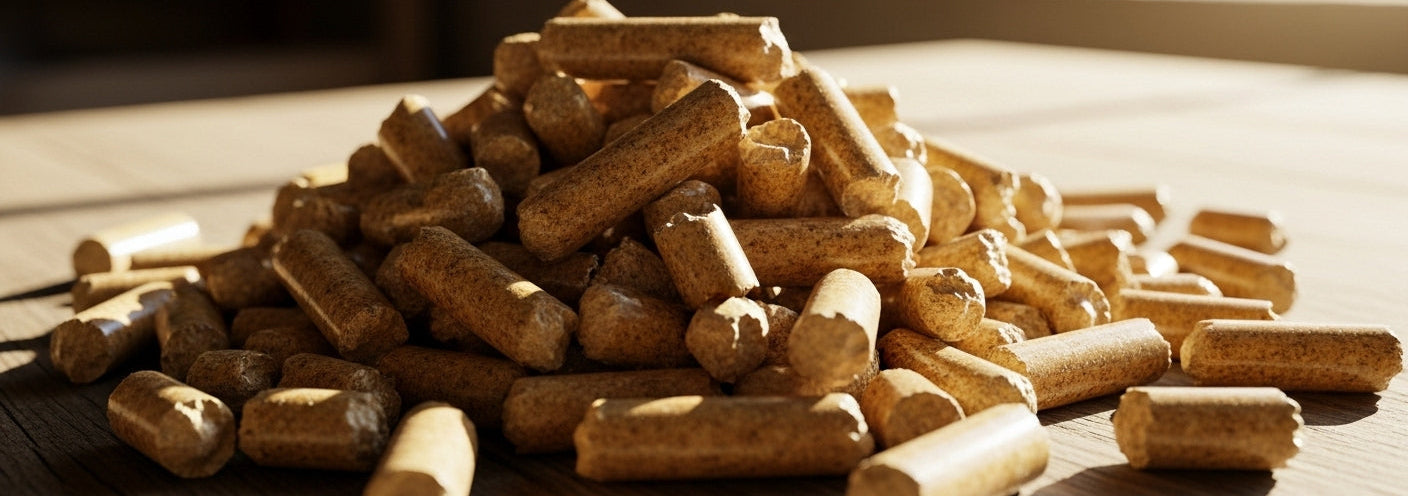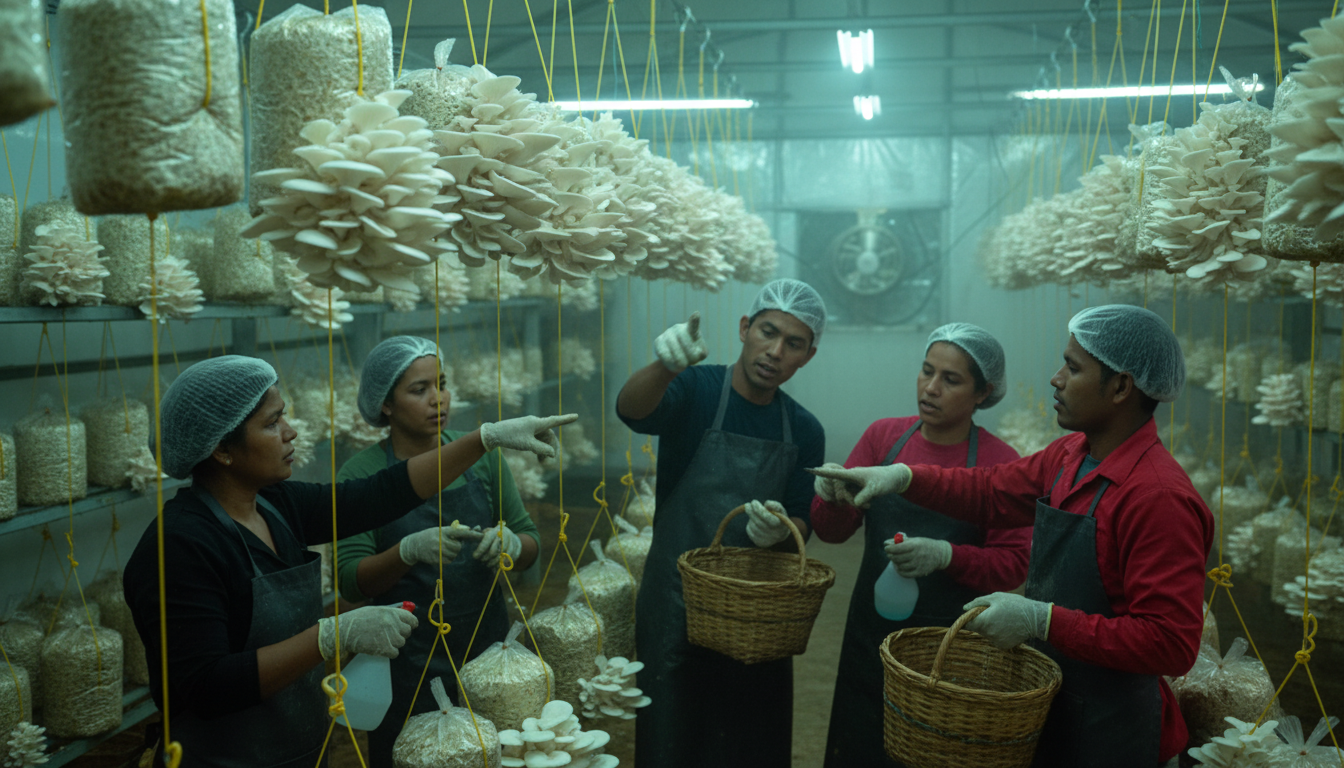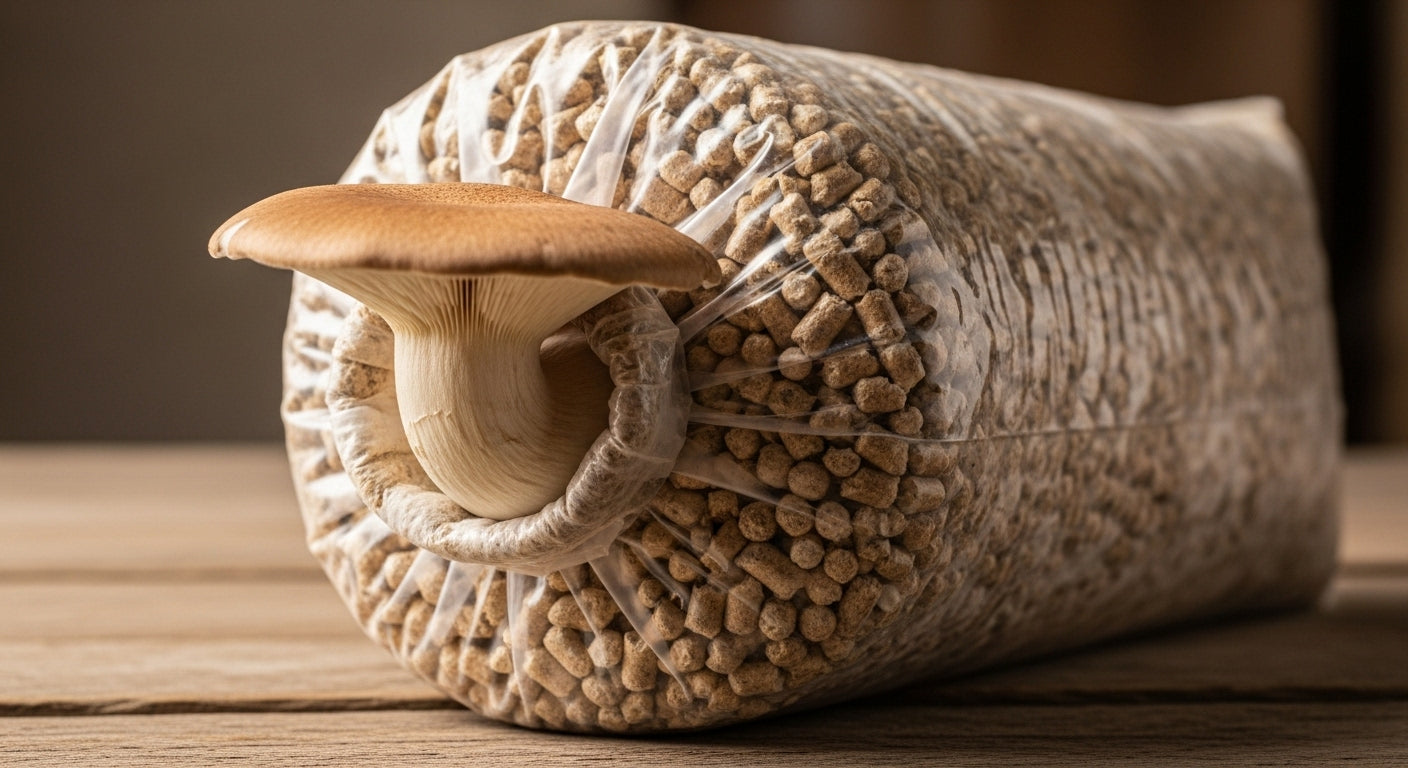One-tonne IBC's are available to order. Pellets are in 10kgs and 3 kgs bags. Our 3kilo bags are ideal to sell to your customers
Contact us for detailsA Practical Guide to Using Oak Pellets in Mushroom Cultivation
When it comes to growing mushrooms successfully, choosing the right substrate is absolutely essential. Among the many materials growers rely on, oak pellets have become a firm favorite. They're reliable, nutrient-rich, and remarkably convenient—qualities any cultivator can appreciate.
In this guide, we'll take a closer look at what makes oak pellets such a dependable choice and walk through how to prepare and use them to achieve steady, healthy yields.
Hydrate the Pellets
Add water to the pellets—typically around 1 liter of water for every 2 pounds of pellets. As they soak, they crumble into fine sawdust.
- Use clean, room temperature water
- Allow pellets to fully expand and break down
- Mix thoroughly to ensure even moisture distribution

Add Nutritional Supplements (Optional)
You may add wheat bran, soybean hulls, or other boosters to enhance nutrition. However, it's wise not to overdo it, as richer substrates are more prone to contamination.
- Keep supplements to 5-10% of total substrate weight
- Mix supplements evenly throughout the substrate
- Higher nutrition means higher contamination risk

Pasteurize the Substrate
Heat the hydrated substrate to around 160–180°F (71–82°C) and maintain this temperature for 1-2 hours. This process eliminates competing organisms while preserving beneficial microbes.
- Use a thermometer to monitor temperature accurately
- Don't exceed 180°F to preserve beneficial organisms
- Allow substrate to cool completely before inoculation

Inoculate with Mushroom Spawn
Once cooled to room temperature, mix in your mushroom spawn. Use approximately 3-5% spawn by weight for optimal colonization. Work in a clean environment to minimize contamination risk.
- Work quickly to minimize contamination exposure
- Distribute spawn evenly throughout substrate
- Sanitize all tools and work surfaces thoroughly

Incubation Period
Store your inoculated substrate in a dark, warm location at 20-24°C (68-75°F). The mycelium will colonize the oak substrate, turning it white. This typically takes 2-4 weeks depending on the mushroom species.
Key Points:
- Check daily for signs of contamination
- Maintain consistent temperature throughout
- Avoid disturbing the substrate during colonization

Initiate Fruiting Conditions
Once fully colonized, move your substrate to fruiting conditions. Provide fresh air exchange, reduce temperature to 15-18°C (59-64°F), increase humidity to 85-95%, and introduce indirect light for 12 hours daily.
- Mist regularly to maintain high humidity
- Ensure adequate fresh air exchange
- Monitor temperature and humidity closely

Harvest Your Mushrooms
Harvest when mushroom caps begin to flatten but before spores drop. Twist and pull gently at the base, or cut with a clean knife. Your oak pellet substrate can produce 2-3 flushes of mushrooms with proper care.
- Harvest in the morning for best quality
- Store fresh mushrooms in paper bags in the refrigerator
- After harvest, allow substrate to rest before next flush


Why Oak Pellets Work So Well?
Oak pellets are simply compressed oak sawdust, but they pack quite a punch when it comes to mushroom cultivation. Here’s why growers trust them:
- Strong Nutritional Profile
Oak naturally contains cellulose, hemicellulose, and lignin—components fungi love. Hardwood-loving varieties such as shiitake and lion’s mane respond particularly well to oak-based substrates. - Clean and Consistent
Because pellets are uniform and free from large bits of debris, they’re very straightforward to prepare. The heat used during pellet production also helps reduce contaminants, making them a tidy, dependable option. - Simple to Store and Handle
Their compact size makes pellets easy to keep on hand. Once hydrated, they soften into a light, airy substrate that mycelium can colonize with ease. - Eco-Conscious Choice
Many oak pellets originate as byproducts of the wood industry, allowing growers to make use of resources that would otherwise go to waste.

How Oak Pellets Support Different Mushroom Varieties?
- Shiitake: Shiitake mushrooms flourish on hardwoods, so oak pellets offer a familiar, natural-feeling substrate that supports firm, flavorful growth.
- Lion’s Mane: Lion’s mane responds beautifully to oak pellets, often producing large, dense, aromatic clusters. The hydrated pellets’ loose, airy texture suits this species well.
- Oyster Mushrooms: Though oyster mushrooms grow on a wide range of materials, oak pellets tend to yield particularly robust, tasty harvests.

Helpful Tips for Best Results
- Mind the Moisture
Aim for a substrate that’s moist but not dripping—similar to a well-wrung sponge. Around 60–65% moisture is ideal. - Stay Clean
A tidy, sanitary working area greatly reduces the chance of contamination. - Experiment Thoughtfully
Combining oak pellets with other hardwoods or agricultural materials can lead to interesting, productive blends.


